Virtual Neurology Services and Intelligent Analytics to Enhance Care & Program Health—Revolutionizing Collaboration with Human-AI Integration
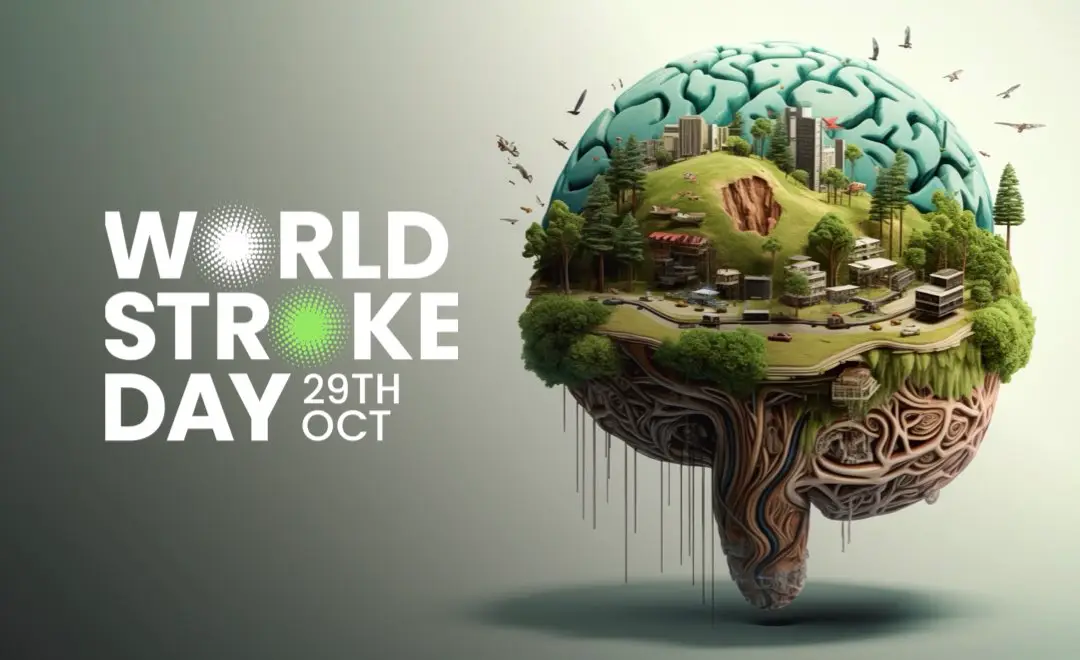
World Stroke Day is an annual event observed on October 29th, which aims to raise awareness about stroke and its global impact. World Stroke Day is an annual event observed on October 29th, which aims to raise awareness about stroke and its global impact.
Organized by the World Stroke Organization (WSO), this day focuses on educating the public on the signs and symptoms of a stroke, the importance of immediate medical attention, and the long-term care and support that stroke survivors may need. The event also emphasizes the prevention strategies individuals can adopt to reduce their risk of a stroke.
This article seeks to demystify the basics of a stroke, recognizing early signs, preventing strokes through healthy lifestyle choices, and the science behind it, ensuring that you walk away with a clear understanding.
A stroke is a sudden interruption in the blood supply to the brain. Whether because of a blockage or bleeding, it’s a medical emergency that requires immediate attention. With millions affected by it globally, strokes are a leading cause of death and disability.
At its core, a stroke is about the brain not getting the nutrients and oxygen it needs to function, typically due to blocked or ruptured blood vessels. Without the vital flow of blood, brain cells start to die, leading to potential long-term damage or death.
This type of stroke occurs when there’s a blockage in a blood vessel supplying blood to the brain. It’s the most common kind, accounting for about 80% of all strokes. These blockages are typically caused by blood clots or the buildup of fatty deposits and other debris.
Hemorrhagic strokes are caused by bleeding within or around the brain. This can result from conditions like aneurysms, which are weakened, bulging sections of blood vessel walls, or arteriovenous malformations (AVMs), tangles of malformed blood vessels.
Often referred to as a “mini-stroke”, a TIA resembles an ischemic stroke but doesn’t last as long and doesn’t cause permanent damage. Even though the effects of a TIA are temporary, it’s crucial to seek medical attention as it could be a warning sign of a future stroke.
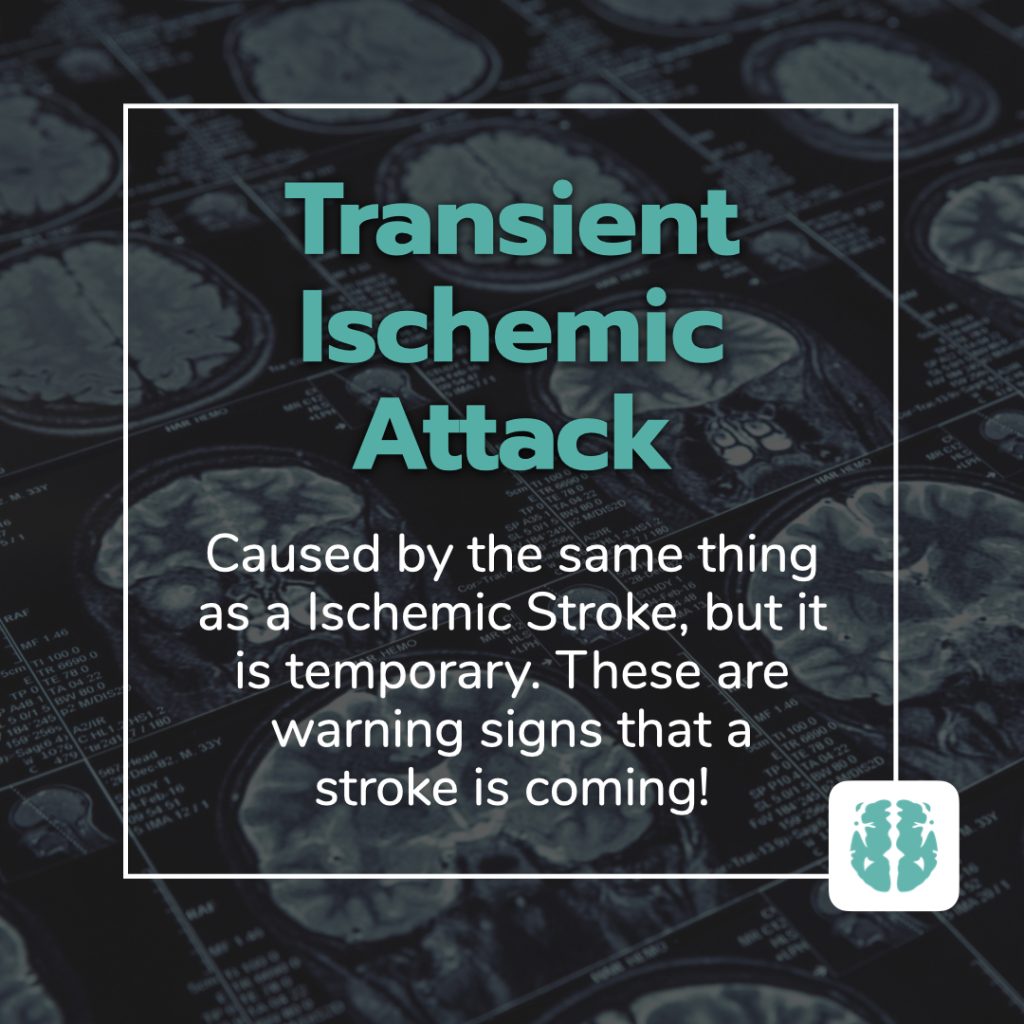
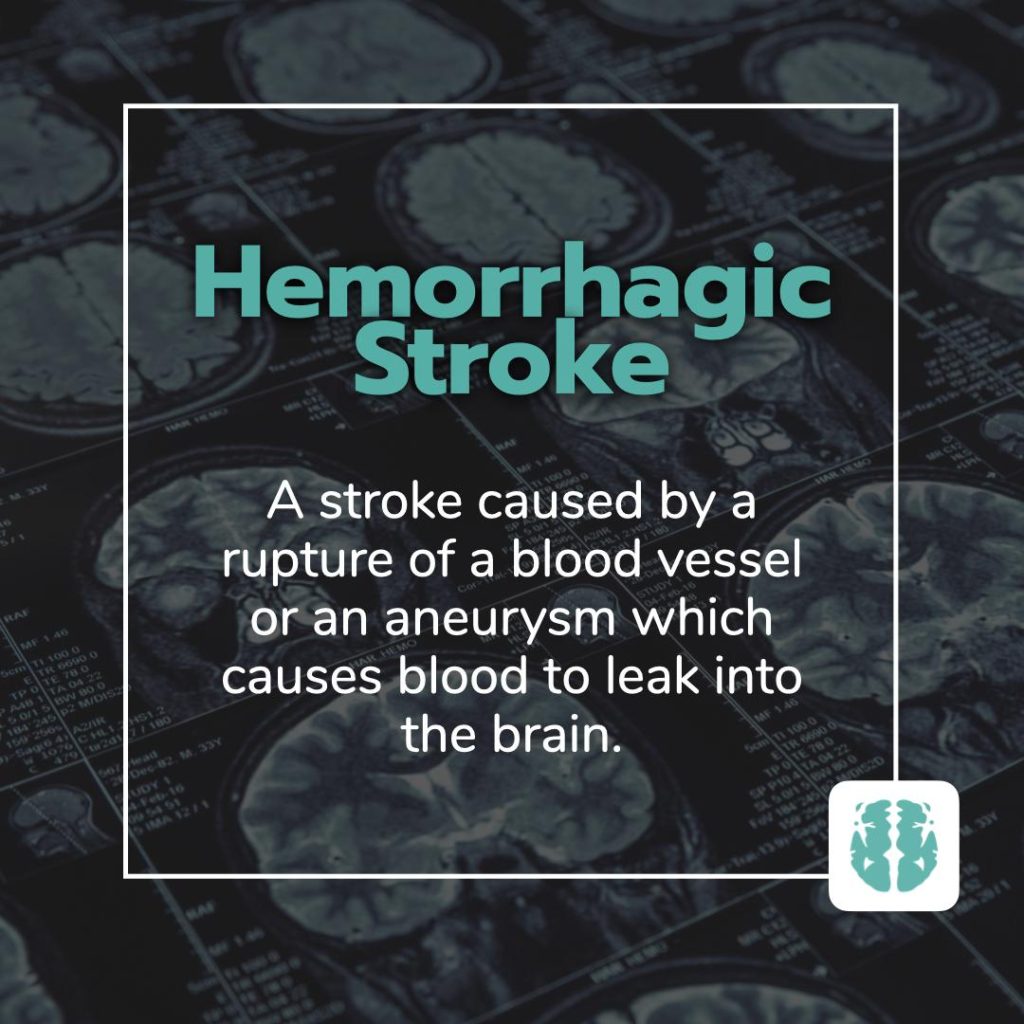
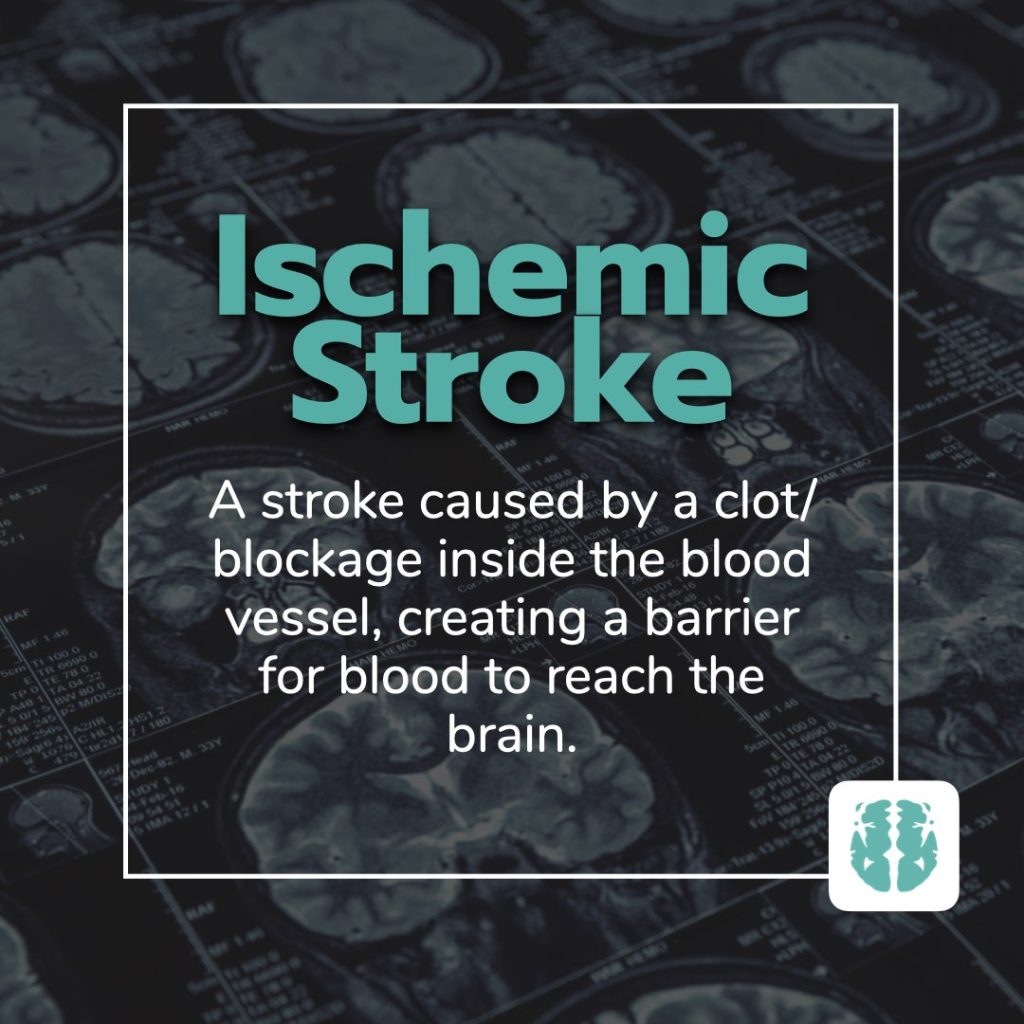
Each of our brain cells needs a steady supply of oxygen to function. This oxygen is delivered via the blood. When there’s an interruption, brain cells become deprived and begin to die, which can lead to lasting damage or even death.
Picture a smoothly flowing river, and now imagine a dam suddenly blocking it. That’s what happens during an ischemic stroke. On the other hand, imagine the riverbank suddenly bursting, causing flooding—that’s akin to a hemorrhagic stroke.
When suspecting someone might be having a stroke, remember the acronym BEFAST:

Keep an eye out for sudden numbness or weakness, especially on one side of the body, sudden confusion, trouble seeing in one or both eyes, trouble walking, dizziness, or an unexplained severe headache.
In stroke treatment, every second counts. The earlier a person gets treatment, the better their outcome is likely to be. In fact, getting to a hospital within 4.5 hours of the first symptoms can greatly reduce the risk of long-term disability.
When you or someone else displays signs of a stroke, it’s essential to call emergency services right away. Also, remember to note when the symptoms first began, as this can influence treatment decisions.
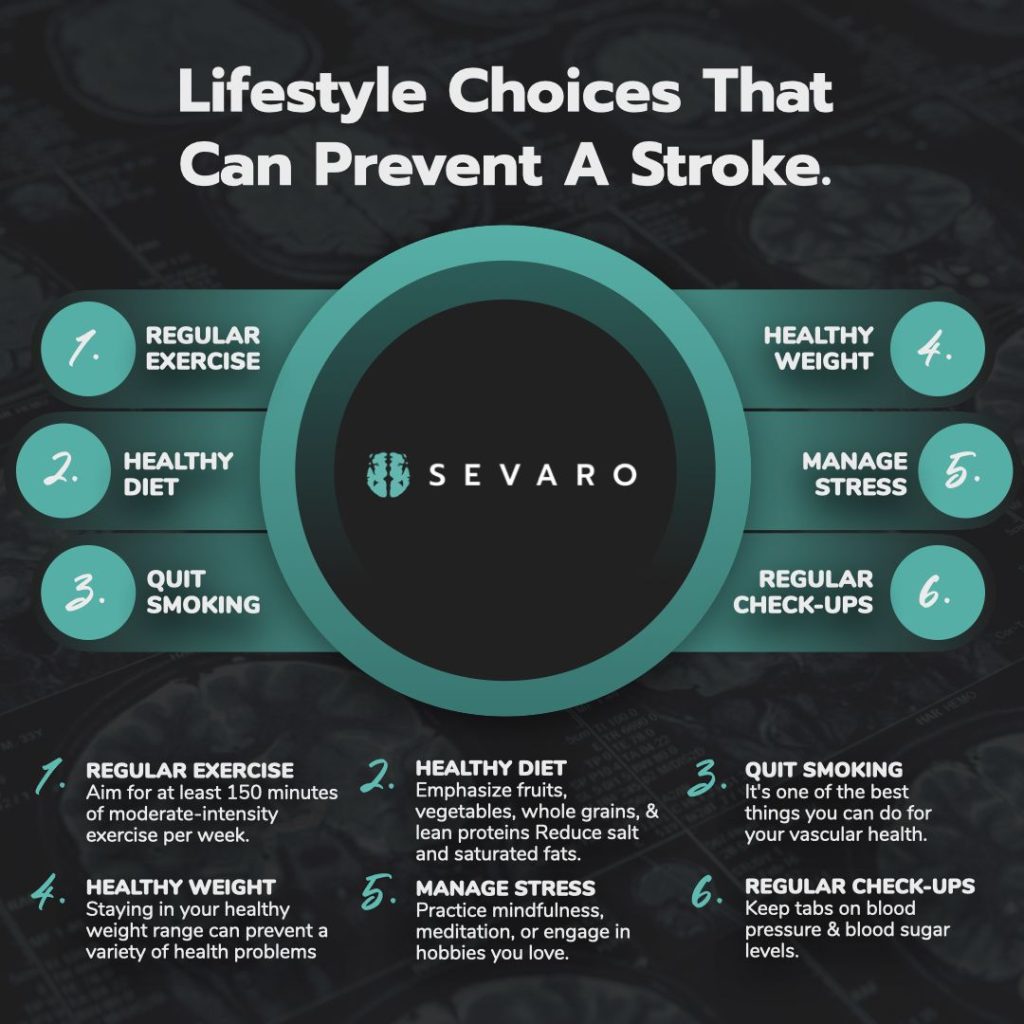
Eating a balanced diet is vital for overall health and particularly beneficial for stroke prevention.
Physical activity has numerous health benefits, one of which is stroke prevention.
Smoking accelerates clot formation by thickening your blood and increasing the amount of plaque buildup in arteries.
It’s essential to keep an eye on potential risk factors.
Historically, diagnosing and treating strokes depended heavily on a patient’s symptoms and basic imaging. Now, we harness technology to offer more precision, speed, and efficiency.
Telestroke is a telemedicine approach that facilitates the consultation of stroke specialists for patients in remote or underserved areas using digital communication.
Experiencing a stroke is undoubtedly a significant and life-altering event, but the journey doesn’t end once the immediate threat has passed. The road to recovery post-stroke is often long and requires patience, determination, and a multidisciplinary approach. Here’s a closer look at the stroke recovery process, giving hope and guidance to patients and their families.
Rehabilitation aims to help patients regain their lost abilities and learn to cope with any residual disability.
Recovery is not just a physical journey; it’s an emotional one too.
Every individual’s recovery journey is unique. While some might regain abilities quickly, others may find progress slower.
Post-stroke, patients may have to adapt to a ‘new normal’, embracing certain lifestyle changes and modifications.
Sevaro presents “My Stroke Journey,” a free monthly support group dedicated to assisting stroke survivors and their caregivers. Recognizing the profound life changes that accompany a stroke for both patients and their families, Sevaro aims to provide ongoing support well after hospital discharge.
With a team comprising neurologists, therapists, educators, and mental health professionals, these virtual sessions address the emotional and physical ramifications of strokes and offer coping strategies.
Guided by Stroke Ambassador Pete Smith, a stroke survivor himself, the sessions inspire and guide attendees to find resilience and hope in their post-stroke life.
Strokes remain a formidable global health concern, affecting millions each year and serving as a major cause of death and long-term disability. This article endeavored to enlighten readers about the basics of strokes, from understanding their genesis, the distinct types, and the science that underpins them.
Recognizing early signs of a stroke, epitomized by the BEFAST method, could mean the difference between life and death. Prompt action, paired with the understanding that “Time is Brain,” maximizes recovery chances.
But knowledge doesn’t stop at recognition and rapid response. Embracing positive lifestyle habits – like a nutritious diet, regular exercise, smoking cessation, and routine health check-ups – can play a pivotal role in stroke prevention. As we look to the future, technological advancements, such as telestroke services and AI diagnostics, are revolutionizing stroke care, offering increased accuracy, swiftness, and accessibility.
On World Stroke Day, and every day, awareness and education remain paramount. With the knowledge you’ve gained from this article, you’re better equipped to not only protect yourself but also to serve as an advocate for stroke awareness in your community. Together, we can make strides in the fight against this pervasive medical emergency.